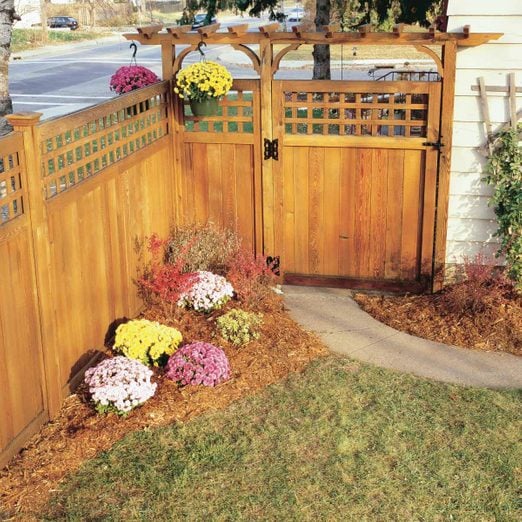A How-To Guide for Fence Restoration
Updated: Jul. 19, 2023
Shabby to handsome in three easy steps
Multiple Days
Beginner
$101–250
Introduction
Make a gray, sagging wood fence look new again. With a few simple repairs, a thorough wash with a power washer, and a nourishing coat of oil stain your fence will look almost like it did the day it was built.Tools Required
- Adjustable wrench
- Cordless drill
- Paint roller
- Paintbrush
- Power washer
- Rain gear
- Safety glasses
Materials Required
- Caulk
- Exterior screws
- Exterior wood glue
- Semitransparent exterior oil stain
- Turnbuckle (if needed)
- Wood preservative
How to Renew a Fence Overview
When did your cedar fence lose its rich, warm glow? Who invited that discolored, shabby-looking impostor into the neighborhood? Don’t worry—underneath that thin gray skin, the glow still remains. All you have to do is remove the surface layer of aged wood cells to expose a fresh layer of wood. With a power washer, it’s as easy as washing your car. Then apply an exterior wood stain to preserve this new layer of wood. It’ll prolong the life of your fence to boot.
Stop dreaming about your perfect deck or patio and start planning.
Project step-by-step (13)
Pressure Washing Makes Cleaning Easy
Pressure washers (also called power washers) are perfect for cleaning a fence, especially the really grimy ones. But you have to be careful as they can erode the wood too deeply and ruin it. The key is to use the right sprayer tip and technique. In any case, the power washer’s spray will slightly raise and roughen the grain on smooth wood. That’s actually good—it allows more sealer to soak in and improves the finish.
Use a power washer that operates at 1,500 or 2,000 psi and avoid more powerful 3,000 or 3,500 psi units. Be sure to get both 15- and 25-degree spray tips. Have the rental people demonstrate the washer’s use. It’s an easy machine to run.
Start the Pressure Washer
To avoid damaging the pump, don’t run the power washer without first filling the pump and hoses with water. To do this, attach a garden hose and the power washer hose to the machine, snap in a 25-degree tip onto the end of the wand, turn on the garden hose spigot and hold down the trigger on the wand until water squirts out for an easy fence cleaner. Release the wand trigger and start the engine. If you’re having trouble with the starter cord, pull the wand trigger to release the water pressure.
Clear the area along the fence by tying back plants that are growing alongside it. Wear water-repellent clothing—you will get wet from the spray.
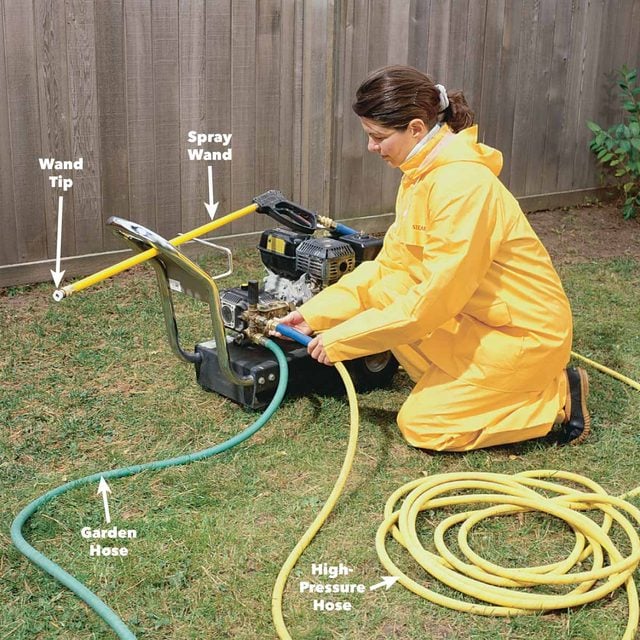
Keep the Sprayer Moving
Start spraying with the wand tip 18 in. from the wood surface. Move-in closer as you swing the tip slowly along the length of the board. Keep the width of the fan spray aligned across the boards. Pull the trigger and keep the sprayer tip moving to avoid gouging the wood. Use a variety of attack angles to strip inside corners.
The wood’s color will brighten as the surface is stripped away. Watch closely and stop stripping when no more color change occurs. You don’t have to remove too much surface to expose fresh wood, and continuing to spray won’t improve the color.
It takes a little practice to arrive at the proper tip distance and speed of movement, but you’ll catch on fast. It’s better to make two or three passes than to risk gouging the surface trying to accomplish this job in one pass.
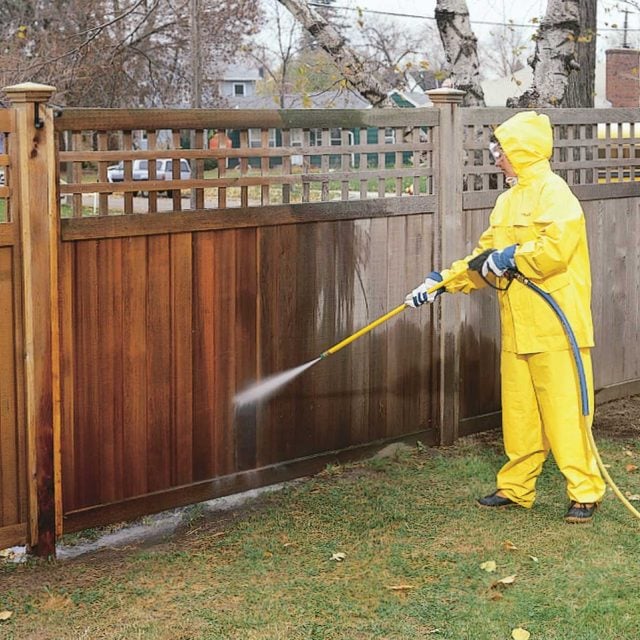
Close Up of Sprayer Tip
You’ll need both a 25-degree (less aggressive) and a 15-degree (more aggressive) sprayer tip. As you gain experience, you can switch to a 15-degree tip. This tip cuts more aggressively and works faster than the 25-degree tip.
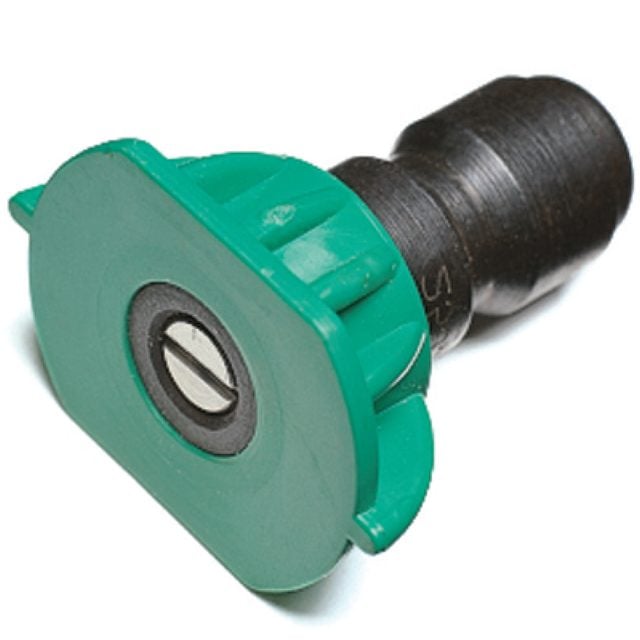
Simple Repairs Add Years to the Life of Your Fence
Now that it’s clean, you can start repairing your fence, like replacing damaged boards, refastening loose boards and countersinking any protruding nails. Use waterproof glue to repair any split and broken boards. Drive corrosion-resistant screws instead of nails to pull loose pieces tightly together. If a gate is sagging, straighten it with a turnbuckle support. Also, coat the posts where they emerge from the ground or concrete with a wood preservative. This is the area where the wood rots first.
Glue Damaged Pieces
Glue split and broken pieces when the wood has dried for at least 24 hours. Apply waterproof glue and clamp or tape the pieces firmly together.
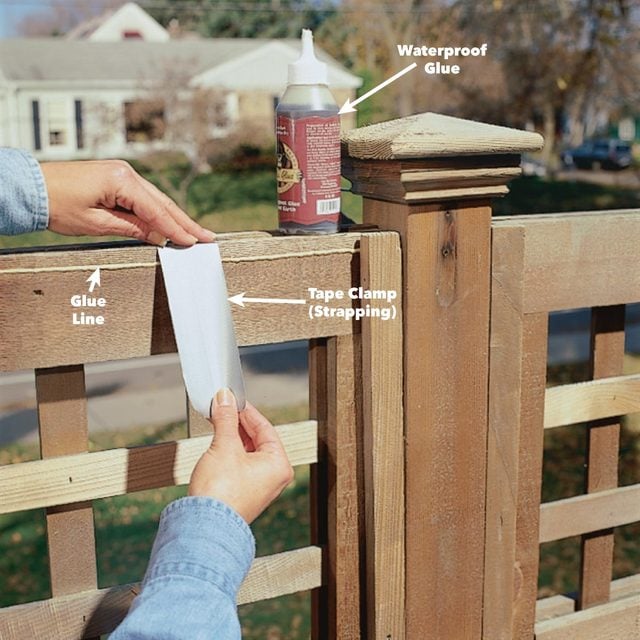
Tighten Loose Boards
Drive weather-resistant or stainless steel screws to tighten loose boards. Recess the head 1/4 in. and fill with a light-colored caulk.
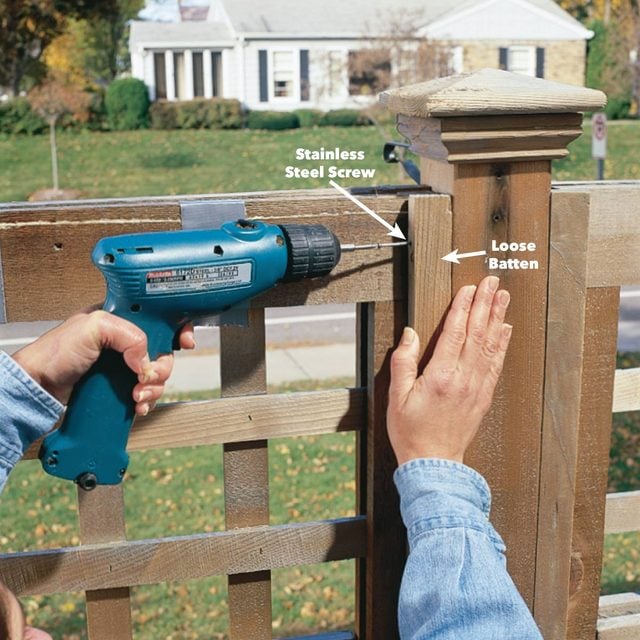
Straighten Gates and Doors
Realign sagging gates with a turnbuckle. We spray-painted the shiny turnbuckle black to make it less conspicuous.
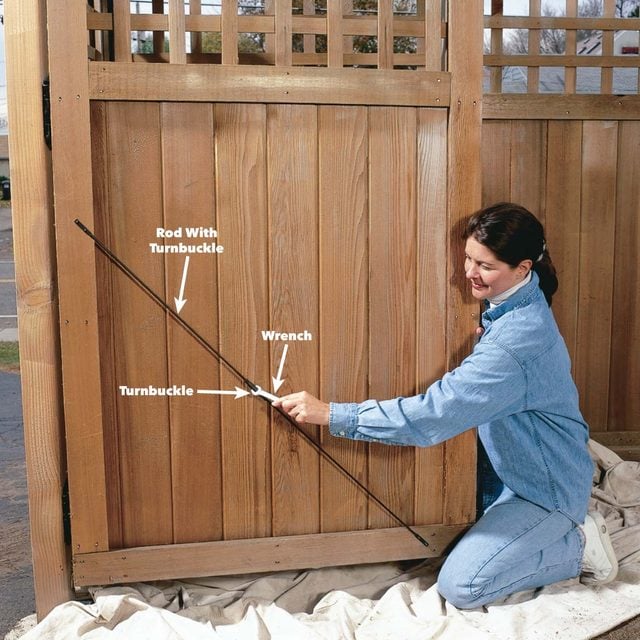
Apply Wood Preservative
Brush a wood preservative into the posts around the base to help prevent rot at this vulnerable area.
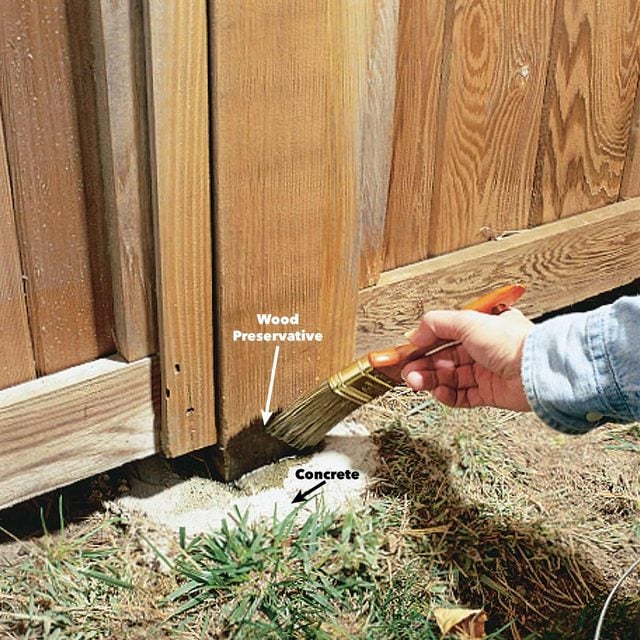
Stain Makes the Fence Look New
To preserve the natural color of the wood, use an exterior semitransparent oil stain. It seals the wood while allowing the grain and color variations to show through. And its pigments add an overall color tone. Make sure the stain contains ultraviolet inhibitors, which will slow down bleaching by sunlight, and a mildewcide to slow fungal growth. Look for samples on cedar at the paint store, or bring in your own piece of wood to test. A test sample is the best way to ensure a satisfactory result.
Before applying the fence stain, be sure the fence is dry. Allow at least 24 hours. If it’s cool and humid, allow another 24 hours.
Roll a Section of Fence Stain
Use a paint roller with a “medium nap” cover to apply a soaking coat to the wood. Let the wood absorb as much sealer as it can. Roll into the dry wood a soaking coat of semi-transparent fence stain. Coat about 3 ft. of the fence, then proceed to brush out the sealer into the wood.
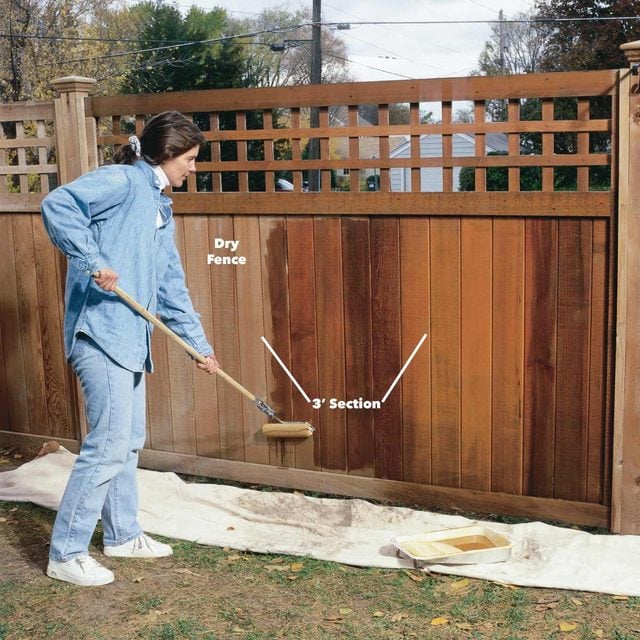
Brush Out the Fence Stain
Brush the stain (backbrush) into the wood grain and all corners and gaps. Brush out any runs or drips.
If the wood still appears dry, roll on additional sealer. Work the sealer into all recesses and corners. The roller applies the stain, but you need the brush to work it well into the wood’s surface.

Stain All Areas
Work the stain into small and tight areas with a trim roller and a 2-in. brush. Keep wet edges to prevent lap marks. One generous coat should be enough.
Most semitransparent oil stains are guaranteed to last two to five years. (Solid-color stains last longer but are more difficult to renew.) Fences usually face severe weathering, so expect the finish to last no more than three years. Plan on recoating the fence within this time frame to keep your fence looking fresh. Before recoating, wash the fence with a garden hose sprayer and use a bristle brush on stubborn dirt deposits and stains. Let the fence dry and stain it using the same method.





















